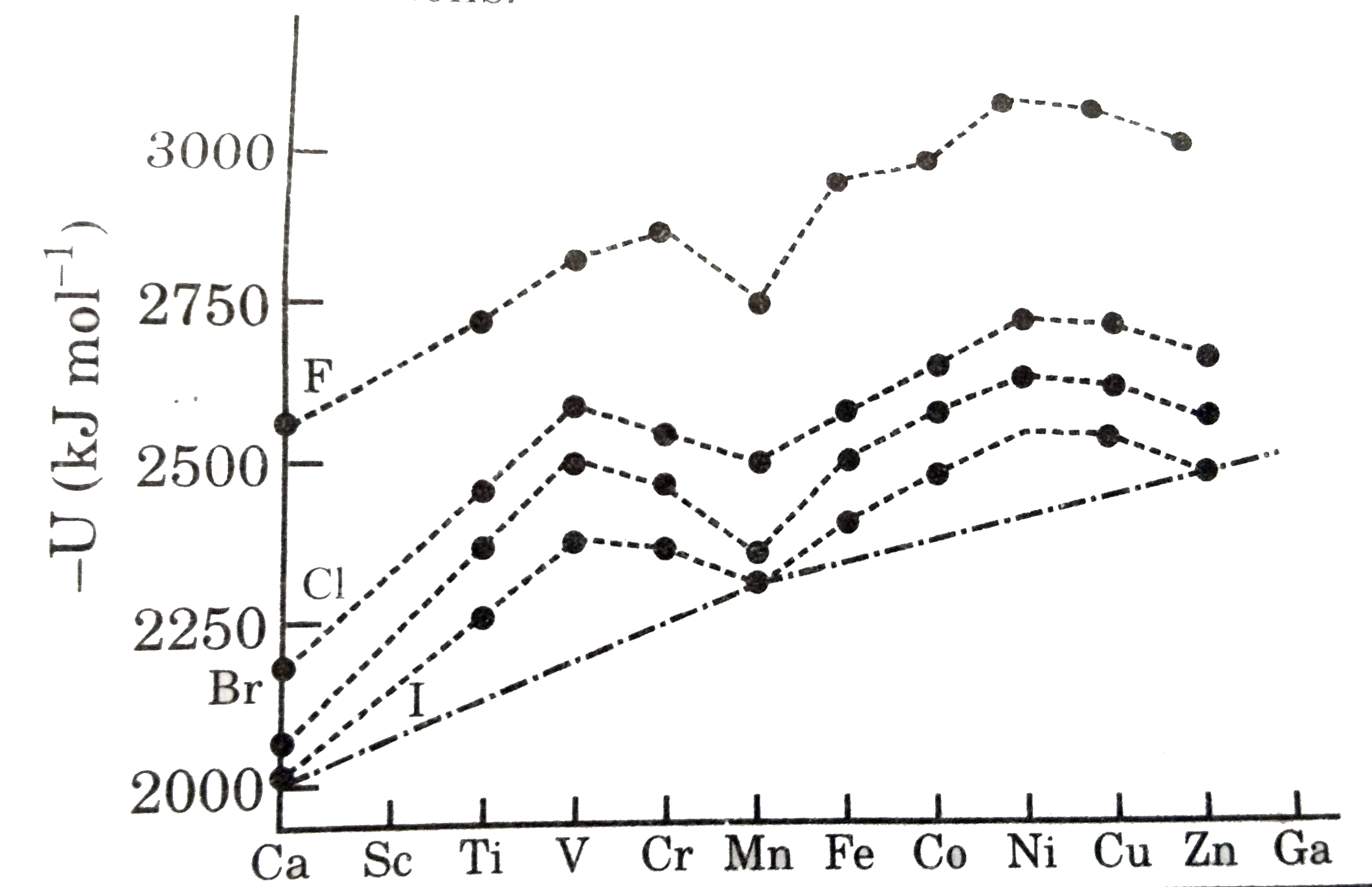Though CFT is used for explaining transition metal complexes yet it can also be used for explaining the variation of lattice energies of transition metal compounds. For example halides of bivalent metal ions of 3d-series (MX2 . It is found that in the crystal of such metal halides each metal ion is octahedrally surrounded by halides ions and vice-versa, hence these compounds can be treated at par with octahedral complexes. In the following figure, variation of lattice energy of MX2 is given with atomic number of metal ions.

In which of the following complexes, the metal ion has lowest ionic radius?
A
[Ti(H2O)6]2+
B
[V(H2O)6]2+
C
[Cr(H2O)6]2+
D
[Mn(H2O)6]2+
Video Solution
Text Solution
The correct Answer is:B
(a)t1,1,02geg0,0
(b) t1,1,12geg0,0
(c ) t1,1,12geg0,1
(d) t1,1,12geg1,1
As t2g.e−↑⏐,size⏐↓ because ligands approach closer to C.A. But, asege−↑⏐,repulsions↑⏐,size↑⏐.

|
Updated on:21/07/2023
Topper's Solved these Questions
- BOOK - GRB PUBLICATIONCHAPTER - COORDINATION COMPOUNDSEXERCISE - COMPREHENSION 422videos
COORDINATION COMPOUNDS
- BOOK - GRB PUBLICATIONCHAPTER - COORDINATION COMPOUNDSEXERCISE - MATCH THE COLUMN TYPE41videos
COORDINATION COMPOUNDS
- BOOK - GRB PUBLICATIONCHAPTER - COORDINATION COMPOUNDSEXERCISE - COMPREHENSION 402videos
COORDINATION COMPOUNDS
- BOOK - GRB PUBLICATIONCHAPTER - CHEMICAL KINETICSEXERCISE - Subjective Type63videos
CHEMICAL KINETICS
- BOOK - GRB PUBLICATIONCHAPTER - D-BLOCK ELEMENTSEXERCISE - Subjective Type18videos
D-BLOCK ELEMENTS
Similar Questions
Knowledge Check
- Question 1 - Select One
Which of the following transition metal ions is colourless ?
AZn2+BTi3+CCr3+DV2+ - Question 2 - Select One
Colourless transition metal ion is
AZn2+BTi3+CCr3+DV2+ - Question 3 - Select One
The colour of transition metal ions is due to
As-s transitionBd-d transitionCp-p transitionDf- f transition
In which of the following transition metal ions d−d transition is possible-
View SolutionWhich of the following alkali metal halides has the lowest lattice energy ?
View SolutionWhich of the following alkali metal halides has the lowest lattice energy
View SolutionOne of the characteristic of transition metals to from the complex ion is
View SolutionOne of the characteristic of transition metals to from the complex ion is
View Solution

